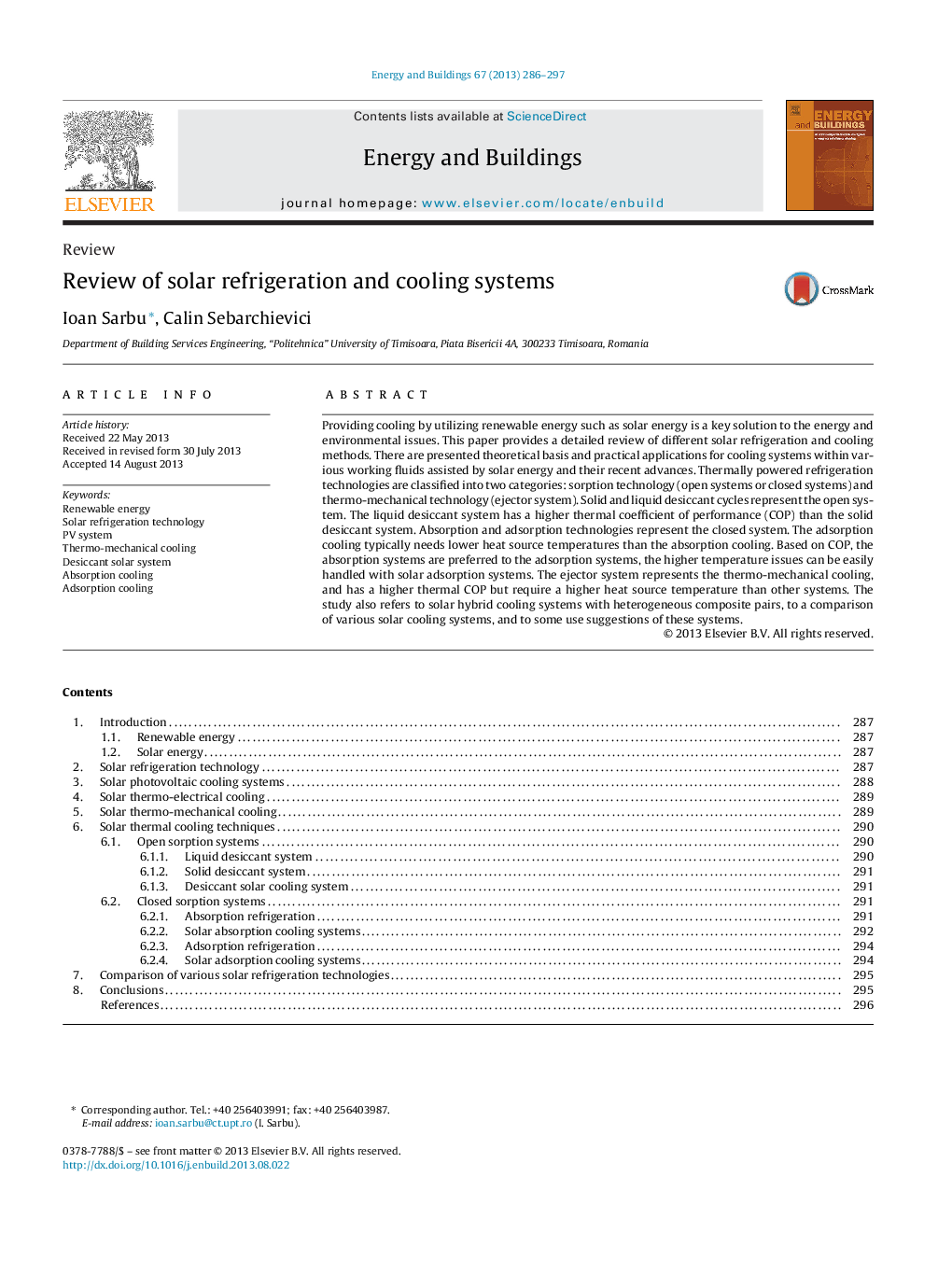| Article ID | Journal | Published Year | Pages | File Type |
|---|---|---|---|---|
| 6734676 | Energy and Buildings | 2013 | 12 Pages |
Abstract
Providing cooling by utilizing renewable energy such as solar energy is a key solution to the energy and environmental issues. This paper provides a detailed review of different solar refrigeration and cooling methods. There are presented theoretical basis and practical applications for cooling systems within various working fluids assisted by solar energy and their recent advances. Thermally powered refrigeration technologies are classified into two categories: sorption technology (open systems or closed systems) and thermo-mechanical technology (ejector system). Solid and liquid desiccant cycles represent the open system. The liquid desiccant system has a higher thermal coefficient of performance (COP) than the solid desiccant system. Absorption and adsorption technologies represent the closed system. The adsorption cooling typically needs lower heat source temperatures than the absorption cooling. Based on COP, the absorption systems are preferred to the adsorption systems, the higher temperature issues can be easily handled with solar adsorption systems. The ejector system represents the thermo-mechanical cooling, and has a higher thermal COP but require a higher heat source temperature than other systems. The study also refers to solar hybrid cooling systems with heterogeneous composite pairs, to a comparison of various solar cooling systems, and to some use suggestions of these systems.
Related Topics
Physical Sciences and Engineering
Energy
Renewable Energy, Sustainability and the Environment
Authors
Ioan Sarbu, Calin Sebarchievici,
